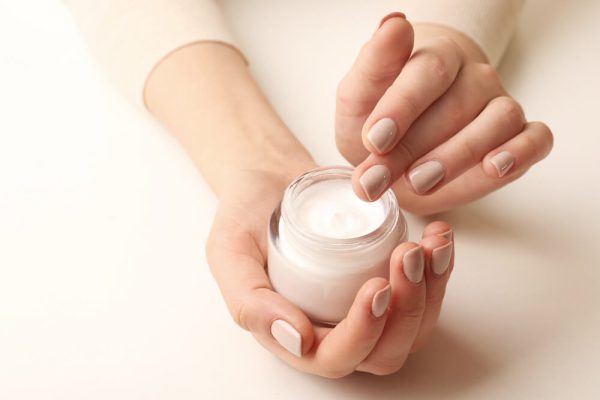Before you get into the pockmarks definition, you might already assume that it is a type of mark on the skin. Yes! You are right, but you now need to know what they are, why do they occur, and how can you treat them.
Pockmarks are basically deep scars or craters on your skin, which mostly appear on your cheeks. Do not worry if you are unable to find the right procedure to get rid of pockmarks. We have come with some of the best home remedies and cosmetic options that can cure the marks quickly.
Why do you get pockmarks?
You may have heard about acne scars or pick marks before. Well, pockmarks are the formal term of pick marks, and you can use both when addressing.
They are blemishes on your skin, that primarily affect your face and appear like a concave disc on your cheeks. Pockmarks are indentations going deeper into the internal layers of your skin and cause damage due to chemicals or UV exposure.
When the internal skin layers start to heal, new collagen is produced within the cells. This excess collagen form scars or cratered tissue marks on your skin. These don’t correspond to the other skin cells and make our skin look unpleasant.
Pockmarks Causes
Check out the probable reasons why you might have pockmarks:
1. Skin problems
Pockmarks may result from skin diseases or disorders, leaving behind blemishes. You need to immediately go to the doctor for diagnosing your medical condition and also ask for the recommendation to heal the marks.
2. Acne
It is one of the most common factors responsible for causing pockmarks. Acne occurs when you reach your puberty and when a lot of hormonal changes take place. During this time, your skin produces excess sebum that clogs your skin pores eventually resulting in pimples or zits. Many of us pop those pimples, not realizing that they turn into pockmarks when dry.
3. Infectious diseases
Sometimes certain diseases like smallpox or chickenpox can result in pockmarks. Nowadays, you really don’t get smallpox but chicken pox is still prevalent. Chickenpox results in the formation of red itchy blisters – scratching them may leave behind permanent pockmarks. Other infections may include diseases from Streptococcus and Staphylococcus strains of bacteria.
Cosmetic pockmarks treatment
Find out if cosmetic treatment for pockmarks work for you or not:
1. Chemical peel
You may undergo this procedure to reduce scarring on your face. During the procedure, the surgeon will apply a layer of acid or enzyme on your skin. (welloflife.com) The chemical peel will help in removing the outer damaged layer of your skin so that regenerates. When the outer dermal layer sheds, you will experience slight redness and itch. You need chemical peel at regular intervals to make the treatment last longer.
2. Dermabrasion
This procedure to cure pockmarks is very similar to a chemical peel, except that you do not use chemicals here! The surgeon pass over a spinning wire brush over the outer layer of your skin to scrape it out. This technique is done either by general or local anesthesia, based on the area of the treatment. Eventually, your skin heals and you have no marks left on your skin. (Tadalafil)
3. Microdermabrasion
This method works similar to dermabrasion to diminish pockmarks. But there is no wire brush or chemicals involved. Here, the skin specialist uses small aluminum oxide or bicarbonate crystals to scrub outer dermal layers. Microdermabrasion works best when your area of treatment is small.
4. Microneedling
It is also known as the collagen-induction therapy, where the dermatologist punctures your skin with tiny needles. Skin needling is a minimally invasive procedure requiring a short post-treatment downtime added skin treatment Sydney. It is specifically done in the regions where pockmarks are present. When the puncture heals, your skin secretes extra collagen to plug the acne scars. However, you need repeated treatments to get effective results.
5. Dermal Fillers
For this treatment, doctors use facial fillers for treating pockmarks. They give injections of various chemicals, to lift pockmarks to the same level as that of other skin tissues.
Doctors need chemicals such as calcium hydroxylapatite and hyaluronic acid serum for this treatment. However, the FDA has approved only Bellafil for treating acne mark. Bellafil contains tiny microspheres of polymethyl methacrylate (PMMA), along with a smooth base made up of collagen gel. Usually, the effects of this technique last for around five years.
How effective is laser therapy?
You may go for laser treatment for treating acne scars as they give you instant results with high accuracy. Two very popular laser treatments for pockmarks are:
1. Ablative laser resurfacing
Pico Laser downtime is an invasive technique of laser surgery that peels off an outer dermal layer, with the help of a laser. You need a few weeks to recover, but no without following additional therapies post the surgery. Sometimes you may experience minor side effects like itching, redness, change in skin color and inflammation.
2. Fractional laser
This technique is quite unique, as it influences the stimulation of skin cells to regenerate within the scars. The surgeon will directly use a laser beam to fall on the pockmarks to induce skin regeneration.
Fractional laser involves burning the outer skin layer with scars and incite the growth of new healthy cells. After a point of time, you will notice lesser pockmarks as they are hardly visible.
Best home remedy for pockmarks
The following home remedy will help you reduce the number of scars on your face and improve skin texture with time.
Moisturizing Oils
Natural oils are extremely effective against pockmarks, as they contain antioxidants to fight scar tissues and heal damaged cells. Some of the natural oils that you may consider using as moisturizers after cleaning your face are:
- Jojoba oil
- Olive oil
- Rosehip seed oil
- Hempseed oil
- Lavender essential oil
Over-the-counter creams that include shea butter and cocoa butter can help reduce acne scars effectively as well. They hydrate your skin and fight redness and itchiness. You may even go for a facial massage to gradually heal the condition of pockmarks. It is not a direct method but the facial massage improves blood circulation and removes toxins from your skin.
If you’d like more information about face care clinics be sure to visit Victorian Dermal Group.





